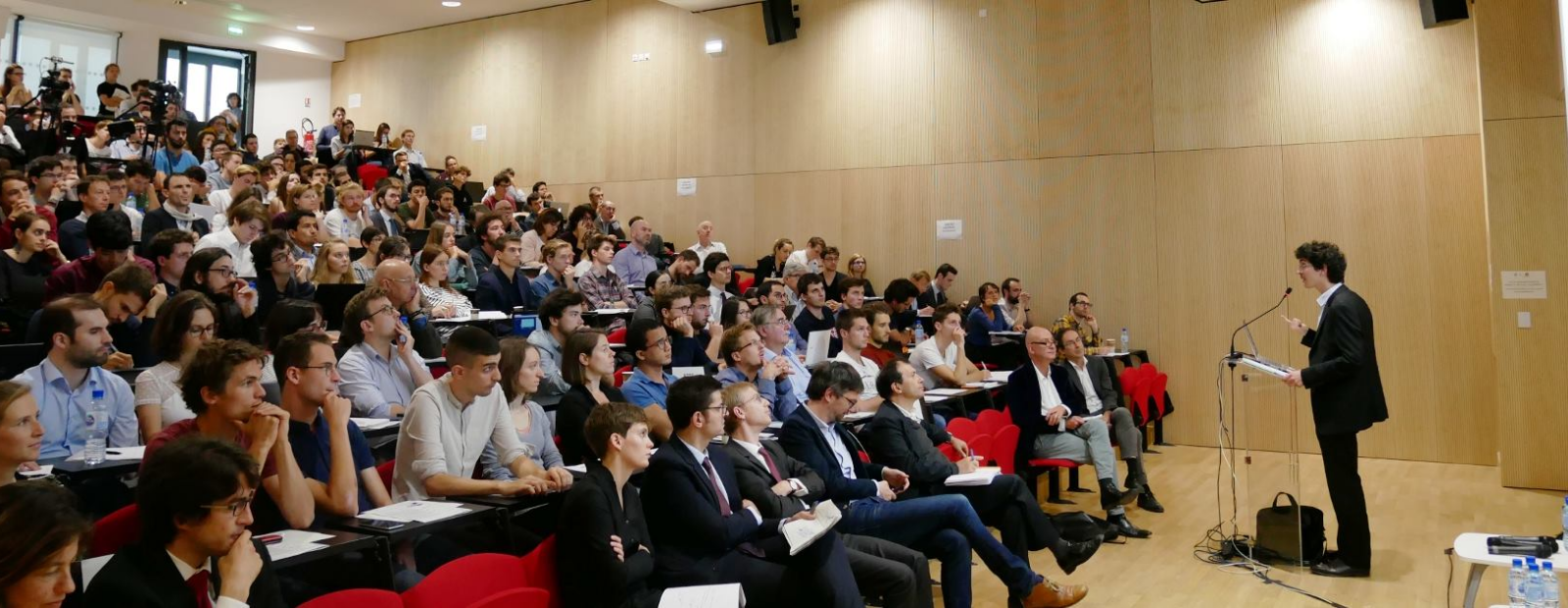Publié en
- Professeur
- Université Paris 1 Panthéon-Sorbonne
- Économie des réseaux
- Economie du changement climatique
- Équilibre général
- Théorie des jeux
Adresse :Maison des Sciences Eco.,
75647 Paris Cedex 13, France
Adresse :106-112 Boulevard de l’Hôpital
Publications HAL
-
Impacts of extreme weather events on mortgage risks and their evolution under climate change: A case study on Florida Article dans une revueRevue : European Journal of Operational Research
-
Disequilibrium propagation of quantity constraints: application to the COVID lockdowns Article dans une revueRevue : Macroeconomic Dynamics
Publié en
-
On the design of public debate in social networks Article dans une revueRevue : Operations Research
Publié en
-
Sequential competition and the strategic origins of preferential attachment Article dans une revueRevue : International Journal of Game Theory
Publié en
-
Monetary dynamics in a network economy Article dans une revueRevue : Journal of Economic Dynamics and Control
Publié en
Onglets
Antoine Mandel is professor of applied mathematics at University Paris 1 Panthéon-Sorbonne and research fellow at the Centre d’Economie de la Sorbonne & Paris School of Economics. He holds a Ph.D. in applied mathematics from University Panthéon-Sorbonne and has been a post-doctoral fellow at the Potsdam Institute for Climate impact research. His works focuses on the development of mathematical and computational models of socio-economic dynamics and their applications to climate economics and finance. Antoine has contributed as a WP/unit leader in a dozen EU-funded interdisciplinary research projects on climate policy and climate impacts. He has also been a unit leader for two Marie Curie ITN projects and part of the steering committee of the European university Una Europa for the sustainability domain. He has published 2 books and over 50 articles in economic, mathematics and natural science journals. He is also part of the editorial board of the Journal of Economic Dynamics and Control. He is very active in scientific dissemination having founded the climate risk fintech CLIMAFIN and being a member of two leading think tanks on climate policy: Climate Strategies and the Global Climate Forum.
Please see my personal website here for more information
See my publication list on my personal website here
WP4 Workshop : Economic trends and challenges for European regions in the energy transition
Date and Place: April 16th, 2pm-6pm via zoom
https://zoom.univ-paris1.fr/j/93487882772?pwd=UFN0OVNpakpKYXMrNE03d0lQS09CQT09
ID meeting : 934 8788 2772
Code: 546900
Abstract: the aim of the workshop is to take stock of work done so far and of ongoing projects on economic trends and challenges for European regions in the energy transition. Most of the work presented is very preliminary. The key idea is to better understand what is going on among the various research groups and to foster new collaborations. Therefore, each presentation will be followed up by substantial discussion.
Program
2pm-2:45pm: An econometric framework for the assessment of the regional impacts of the energy transition (Saptorshee Chakraborty, PSE): 20 mins presentation+ 25 mins discussion
2:45pm-3:30pm: microsimulation model for the coal and carbon intensive regions (Jakub Sokołowski, IBS).
20 mins presentation+ 25 mins discussion
3:30pm-4:00pm: zoom break
4:00pm-4:45pm: Macroeconomic modelling of circular economy industry clusters. (Raphaela Maier, Uni Graz). 20 mins presentation+ 25 mins discussion
4:45pm-5:30pm: Adaptive policymakIng Model (Nikos Kleanthis, UPRC). 20 mins presentation+ 25 mins discussion
5:30pm-6pm: General discussion
